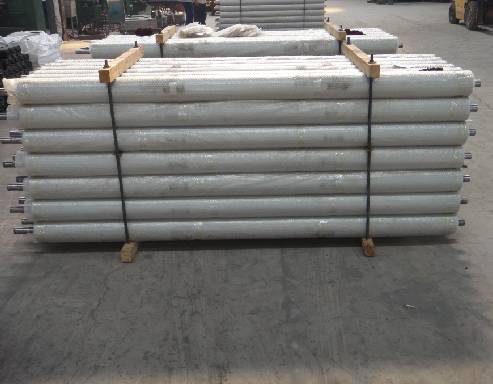 Afrikaans
Afrikaans  Albanian
Albanian  Amharic
Amharic  Arabic
Arabic  Armenian
Armenian  Azerbaijani
Azerbaijani  Basque
Basque  Belarusian
Belarusian  Bengali
Bengali  Bosnian
Bosnian  Bulgarian
Bulgarian  Catalan
Catalan  Cebuano
Cebuano  Corsican
Corsican  Croatian
Croatian  Czech
Czech  Danish
Danish  Dutch
Dutch  English
English  Esperanto
Esperanto  Estonian
Estonian  Finnish
Finnish  French
French  Frisian
Frisian  Galician
Galician  Georgian
Georgian  German
German  Greek
Greek  Gujarati
Gujarati  Haitian Creole
Haitian Creole  hausa
hausa  hawaiian
hawaiian  Hebrew
Hebrew  Hindi
Hindi  Miao
Miao  Hungarian
Hungarian  Icelandic
Icelandic  igbo
igbo  Indonesian
Indonesian  irish
irish  Italian
Italian  Japanese
Japanese  Javanese
Javanese  Kannada
Kannada  kazakh
kazakh  Khmer
Khmer  Rwandese
Rwandese  Korean
Korean  Kurdish
Kurdish  Kyrgyz
Kyrgyz  Lao
Lao  Latin
Latin  Latvian
Latvian  Lithuanian
Lithuanian  Luxembourgish
Luxembourgish  Macedonian
Macedonian  Malgashi
Malgashi  Malay
Malay  Malayalam
Malayalam  Maltese
Maltese  Maori
Maori  Marathi
Marathi  Mongolian
Mongolian  Myanmar
Myanmar  Nepali
Nepali  Norwegian
Norwegian  Norwegian
Norwegian  Occitan
Occitan  Pashto
Pashto  Persian
Persian  Polish
Polish  Portuguese
Portuguese  Punjabi
Punjabi  Romanian
Romanian  Russian
Russian  Samoan
Samoan  Scottish Gaelic
Scottish Gaelic  Serbian
Serbian  Sesotho
Sesotho  Shona
Shona  Sindhi
Sindhi  Sinhala
Sinhala  Slovak
Slovak  Slovenian
Slovenian  Somali
Somali  Spanish
Spanish  Sundanese
Sundanese  Swahili
Swahili  Swedish
Swedish  Tagalog
Tagalog  Tajik
Tajik  Tamil
Tamil  Tatar
Tatar  Telugu
Telugu  Thai
Thai  Turkish
Turkish  Turkmen
Turkmen  Ukrainian
Ukrainian  Urdu
Urdu  Uighur
Uighur  Uzbek
Uzbek  Vietnamese
Vietnamese  Welsh
Welsh  Bantu
Bantu  Yiddish
Yiddish  Yoruba
Yoruba  Zulu
Zulu Optimizing Belt Training Systems for Enhanced Performance and Durability in Industrial Applications
Understanding Belt Training Idlers A Comprehensive Guide
Belt training idlers are crucial components in conveyor systems, playing an essential role in maintaining the efficiency and longevity of operations in various industries, including mining, manufacturing, and logistics. To fully appreciate their significance, it's essential to delve into their function, design, and maintenance, as well as the advancements in technology that have revolutionized their use.
What are Belt Training Idlers?
Belt training idlers are specially designed rollers that help to keep the conveyor belt aligned and in proper position during its operation. These components are pivotal in ensuring that the belt does not drift or misalign, which can lead to significant operational inefficiencies, increased wear and tear, and potential safety hazards.
These idlers are typically placed along the conveyor system at strategic points where there’s a higher likelihood of belt misalignment. They help train the belt by providing lateral guidance, ensuring that it travels smoothly and consistently across its path.
Types of Belt Training Idlers
There are several types of belt training idlers, each suited to specific applications and operational needs
1. Tapered Idlers These are designed with a slight slope, helping to direct the belt back to its intended path. They are often used in applications where the belt tends to drift off-center.
2. Self-Aligning Idlers These idlers automatically adjust to the position of the belt, providing a dynamic solution to alignment issues. They are advantageous in environments where the belt’s path may change due to load variations.
3. Flat and V-Shaped Idlers These are used to enhance the belt's stability during operation. V-shaped idlers, in particular, help maintain a firm grip on the belt, reducing the chance of slippage.
belt training idlers

Importance of Proper Maintenance
Regular maintenance of belt training idlers is vital for ensuring their efficiency and longevity. Neglecting maintenance can lead to premature wear of the idlers, which can increase operational costs and downtime. Here are some key maintenance practices
1. Regular Inspections Conducting routine inspections can help identify wear patterns, misalignments, and other issues before they escalate into more significant problems.
2. Lubrication Proper lubrication of idlers ensures smooth operation, reducing friction and heat buildup that can lead to failure.
3. Replacement of Worn Components If an idler shows signs of significant wear or damage, it should be replaced immediately to avoid further complications in the conveyor system.
Advancements in Technology
In recent years, technological advancements have greatly improved the design and functionality of belt training idlers. For instance, the incorporation of smart technologies, such as sensors and monitoring systems, allows for real-time assessment of the idlers’ performance. These smart idlers can alert operators to potential issues, enabling proactive maintenance and reducing downtime.
Additionally, the use of advanced materials has enhanced the durability and effectiveness of idlers. Modern idlers are designed to withstand harsh operating conditions, including extreme temperatures and abrasive materials, ensuring that they perform effectively over extended periods.
Conclusion
Belt training idlers are indispensable to the efficient operation of conveyor systems across various industries. Their role in maintaining proper belt alignment not only enhances productivity but also ensures safety and minimizes operational costs. With regular maintenance and the adoption of innovative technologies, businesses can maximize the longevity and effectiveness of their belt training idlers, thus ensuring smooth and efficient operations in an increasingly demanding industrial landscape. Understanding these components and their significance can lead to improved performance and reliability in conveyor system operations.
-
Revolutionizing Conveyor Reliability with Advanced Rubber Lagging PulleysNewsJul.22,2025
-
Powering Precision and Durability with Expert Manufacturers of Conveyor ComponentsNewsJul.22,2025
-
Optimizing Conveyor Systems with Advanced Conveyor AccessoriesNewsJul.22,2025
-
Maximize Conveyor Efficiency with Quality Conveyor Idler PulleysNewsJul.22,2025
-
Future-Proof Your Conveyor System with High-Performance Polyurethane RollerNewsJul.22,2025
-
Driving Efficiency Forward with Quality Idlers and RollersNewsJul.22,2025





























